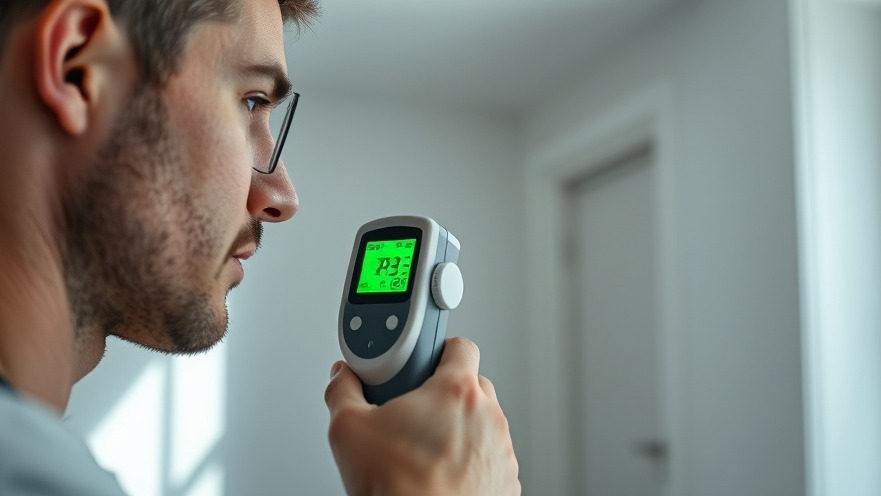
Understanding Indoor Air Quality: What New Construction Homes Don't Tell You
When you invest in a brand-new home, the excitement often centers on the pristine features—gleaming countertops, modern appliances, and the captivating aroma of fresh paint. But beneath that polished exterior lies a startling truth: many new constructions harbor poor indoor air quality (IAQ). This issue, rarely thought about upon moving into a new house, can have significant implications for health and comfort.
The Hidden Dangers of the 'New House Smell'
The phenomena so affectionately dubbed the "new house smell" is less a sign of luxury and more a signal of potential danger. This pleasant aroma is primarily comprised of volatile organic compounds (VOCs) like formaldehyde, which are emitted from various new materials used during construction, including:
Freshly painted walls
New carpeting and flooring
Composite wood products
Adhesives and sealants
While energy-efficient tightly-sealed homes are ideal for utility savings, they also trap these pollutants indoors, contributing to a decline in air quality that can lead to health risks.
Why Poor IAQ is Rampant in New Spaces
Several factors combine to exacerbate the air quality issues in newly constructed homes:
Tighter Building Codes for Energy Efficiency: New construction often adheres to stringent building codes aimed at bolstering energy efficiency. While reducing energy costs is beneficial, this can inadvertently trap contaminants and prevent adequate ventilation.
Accumulation of Construction Dust: Despite post-construction cleaning, dust and debris can linger. If not properly addressed, these particles can circulate through HVAC systems, affecting air quality long after the construction dust has settled.
Consistent Off-Gassing: Building materials continue to emit VOCs long after installation. This off-gassing can persist for weeks or months, introducing a continuous influx of harmful chemicals into the living environment.
Lack of Proper Ventilation: Builders sometimes cut corners with ventilations systems to save costs, resulting in inadequate airflow that exacerbates pollutant accumulation.
Moisture Issues: Sealing homes before structural materials have fully dried can lead to increased humidity, creating perfect conditions for mold growth, which is a significant contributor to poor IAQ.
Identifying Poor IAQ: Signs to Watch For
How can homeowners spot the signs of poor indoor air quality? Look out for:
Persistent chemical odors
Allergy symptoms, such as sneezing and itchy eyes
Increased humidity leading to moisture problems
These red flags can signal that the air quality in your new home needs to be addressed.
Mitigation Strategies: Enhancing Your Home’s Air Quality
To tackle the issues related to IAQ in new homes, you can consider the following:
Improved Ventilation: Installing advanced ventilation systems can help ensure pollutants are effectively vented out while allowing fresh air to circulate.
Using Low-VOC Materials: When choosing building materials, opt for those labeled low-VOC. This can drastically reduce the amount of harmful chemicals released into your living space.
Regular Maintenance: Schedule regular inspections and cleanings of HVAC systems to prevent dust accumulation and improve air circulation.
Moisture Control: Use dehumidifiers to keep moisture levels in check and prevent mold from establishing a foothold.
This proactive approach not only fosters a healthier environment but also enhances the overall life quality within your home.
Addressing the Emotional Impact: How Poor IAQ Affects Families
When families become aware of poor air quality, it can create anxiety over health, particularly for children or those with existing respiratory issues. Increasing education around IAQ not only alleviates worry but encourages actions to improve home environments significantly.
Conclusion: Improving Indoor Air Quality Is Worth the Effort
Investing in the health of your home's indoor environment brings long-term benefits for both physical health and emotional well-being. Homeowners should take the time to evaluate potential air quality issues in new constructions and implement changes to ensure a safe and breathable living space.
To find out how to effectively manage mold and improve indoor air quality, reach out to professional mold remediation services in your area. Taking action now will pay dividends in the health and comfort of your home.
#IndoorAirQuality, #NewConstruction, #VOCs, #Ventilation, #Mold
 Add Row
Add Row  Add
Add 




Write A Comment